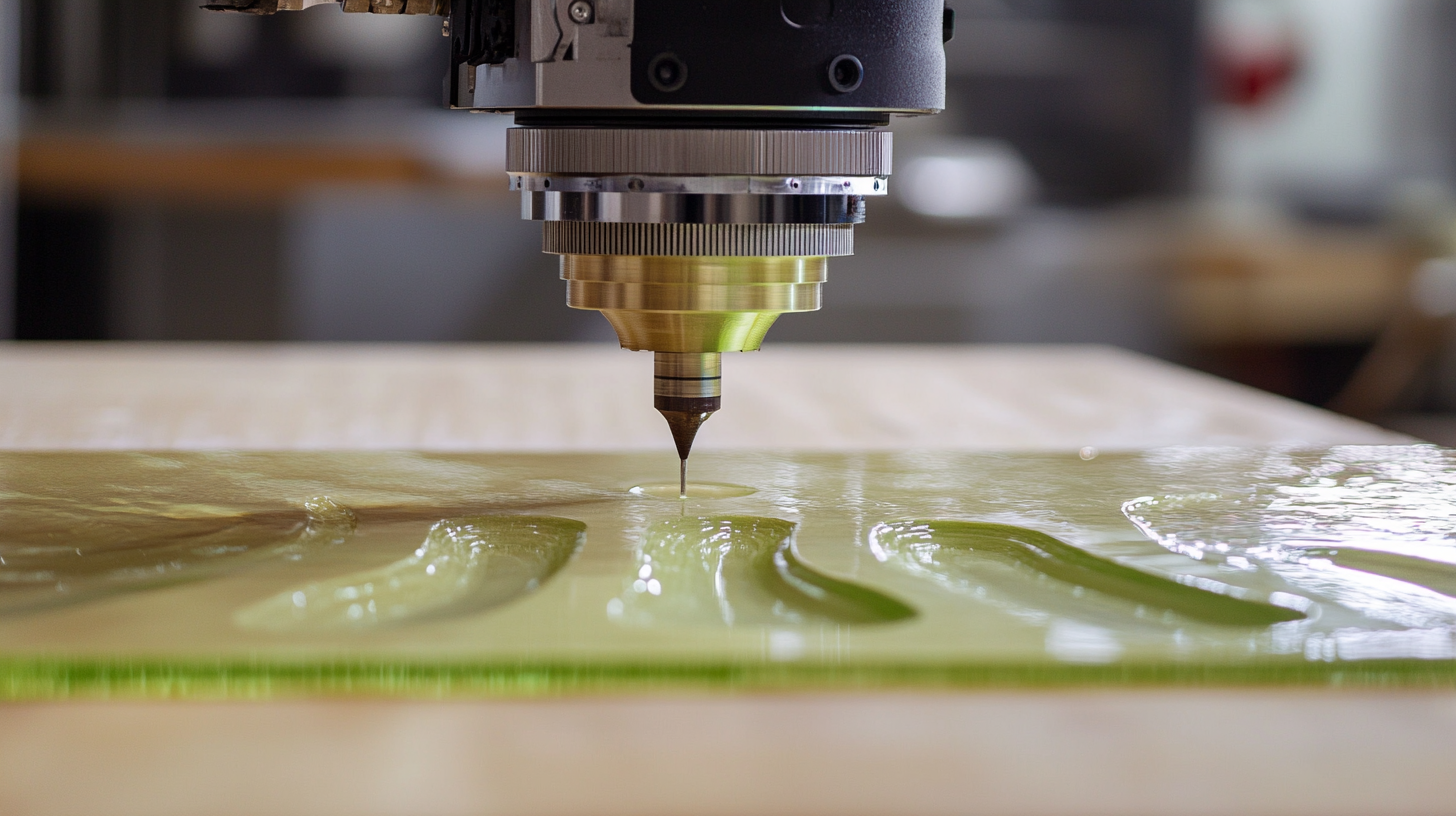As we approach 2025, the landscape of CNC services is undergoing a significant transformation, influenced by rapid technological advancements and shifting market demands. According to a recent report by Grand View Research, the global CNC machining market is expected to reach USD 100 billion by 2025, growing at a CAGR of over 7.5%. This surge underscores the increasing reliance of industries such as aerospace, automotive, and medical on precision machining and customized solutions. Furthermore, the arrival of Industry 4.0 technologies, including IoT and AI integration, is revolutionizing operational efficiency and product quality in CNC service offerings. To remain competitive, businesses must adapt to these global trends, embracing innovation and sustainability in their practices. This blog will explore how companies can navigate these changes and thrive in the evolving CNC service landscape.

As we approach 2025, the influence of Industry 4.0 on CNC service optimization is poised to reshape the landscape of manufacturing. The integration of advanced technologies, including machine condition monitoring and energy efficiency services, is fundamental for companies aiming to enhance operational efficiency and reduce costs. For instance, the global CNC machine market, projected to grow at a CAGR of 5.5%, underscores the rising demand for optimized machining processes tailored for various composites. This trend highlights the necessity for manufacturers to adopt innovative tooling designs and sophisticated monitoring systems that can ensure quality and precision in real-time.
Moreover, the evolution towards smart manufacturing facilitates data transparency and actionable insights for energy consumption. By leveraging these advancements, companies can not only streamline their production processes but also align with sustainability goals that are becoming increasingly crucial in today’s industrial ecosystem. As businesses navigate this transformation, those that embrace Industry 4.0 will find themselves better positioned to adapt and thrive in a competitive market, ensuring their relevance and profitability for years to come.
| Trend | Impact on CNC Services | Adaptation Strategies | Future Outlook |
|---|---|---|---|
| Increased Automation | Enhanced efficiency and reduced labor costs | Invest in automation technologies and training | Higher productivity with lower error rates |
| Data-Driven Decision Making | Real-time monitoring and analytics | Implement IoT solutions for data collection | Informed strategic planning and operations |
| Sustainable Practices | Reduction in waste and energy consumption | Adopt green technologies and methods | Increased market competitiveness |
| Customizability and Flexibility | Ability to meet diverse customer needs | Embrace flexible manufacturing systems | Stronger customer relationships |
| Integration with AI and ML | Enhanced predictive maintenance and quality control | Leverage AI tools for process optimization | Reduced downtime and improved outputs |
As we look towards 2025 and beyond, the landscape of CNC machining is being profoundly influenced by emerging materials and technologies. One of the most significant trends is the rise of advanced composite materials, which are gaining traction due to their lightweight and high-strength properties. These materials not only enhance the performance of manufactured parts but also contribute to sustainability efforts by reducing energy consumption in various applications. CNC services must adapt to these changes by investing in equipment and skills that accommodate the complexities of machining such innovative materials.
Furthermore, advancements in automation and artificial intelligence are reshaping how companies approach CNC services. The integration of smart technologies allows for real-time monitoring and data analysis, leading to improved precision and efficiency in machining processes. Companies that embrace these technological trends can optimize their operations, reduce waste, and deliver exceptional quality to their clients. As we navigate these transformative years, staying ahead of the curve in adopting new materials and technologies will be crucial for businesses aiming to thrive in the competitive CNC landscape.
The demand for CNC services is projected to experience significant growth through 2025, fueled by advancements in technology and increasing automation across various industries. As manufacturers embrace digital transformation, the CNC machine market is expected to expand from approximately $101.22 billion in 2025 to $195.59 billion by 2032, reflecting a robust compound annual growth rate (CAGR) of 9.9%. This growth trajectory indicates a strong focus on precision engineering, where the customization of manufacturing processes becomes crucial to meeting diverse consumer needs and improving operational efficiencies.
Moreover, trends such as the integration of artificial intelligence in CNC vertical machining centers are revolutionizing production capabilities. The market for these centers is estimated to grow by $1.09 billion between 2025 and 2029, driven by the demand for advanced CNC tools and optimized workflow solutions. Such innovations not only enhance productivity but also enable manufacturers to adapt more swiftly to evolving market conditions. As companies navigate these dynamic trends, investing in CNC services will be key to sustaining competitiveness and ensuring long-term success in the manufacturing landscape.

Sustainability has become a critical focus for industries across the globe, particularly within CNC services, as companies strive to comply with increasingly stringent eco-friendly regulations. As we navigate towards 2025, integrating sustainable practices is not merely an option but a necessity for thriving in the competitive landscape. The adoption of green technologies and innovative manufacturing processes can significantly reduce environmental footprints, positioning firms as leaders in sustainable CNC practices.
In the realm of CNC services, implementing sustainable logistics plays a pivotal role in achieving operational efficiency. This approach encompasses all aspects of the supply chain, from sourcing materials to distribution, ensuring that each stage minimizes waste and carbon emissions. Furthermore, the industry is witnessing a shift towards renewable energy sources and waste reduction strategies, which are essential for aligning with current legislative expectations. As these trends gain momentum, companies that proactively adopt these sustainable initiatives will likely see enhanced market positioning and consumer trust, setting a benchmark for others in the CNC sector.

As the demand for precision and customization in manufacturing soars, the CNC (Computer Numerical Control) industry stands at a crossroads, particularly regarding workforce development. According to a recent report by the National Association of Manufacturers, nearly 2.1 million manufacturing jobs are projected to remain unfilled over the next decade. This gap highlights the urgent need for strategic workforce development initiatives that not only attract new talent but also upskill the existing workforce, ensuring that CNC operations are equipped to handle complex, technology-driven demands.
Investing in training programs is essential. Industry experts suggest that implementing apprenticeship models can significantly bridge the skills gap. The Metalworking Industry Association reported that such initiatives lead to a 53% retention rate among skilled workers. Furthermore, partnerships with educational institutions can facilitate the development of tailored curricula focused on emerging technologies like additive manufacturing and advanced CNC techniques. This collaborative approach can create a pipeline of proficient operators who are ready to meet the evolving expectations of the market.
Moreover, fostering a culture of continuous learning and adaptability within organizations is critical. Research from Deloitte indicates that companies that prioritize ongoing training can see employee productivity increase by up to 20%. By embracing innovative learning methods, including online platforms and virtual reality simulations, CNC operations can enhance their workforce’s capabilities, preparing them not just for today’s challenges but for the future landscape of manufacturing.
This pie chart illustrates the key workforce development strategies for future-proofing CNC operations. Each segment represents the proportion of focus on different strategies to adapt and thrive in the evolving CNC landscape.
